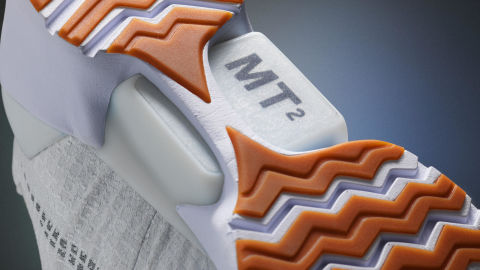http://www.esquire.com/style/news/a50718/nike-hyperadapt-price/
One of the most exciting
developments in footwear this year is the appearance of auto-lacing. The
technology of a self-lacing shoe was first imagined up by Tinker
Hatfield, the legendary sneaker designer who brought us most of the
first dozen Air Jordans. He fabricated the idea for Back to the Future: Part II,
predicting future footwear that laced itself. The shoe became the Nike
Mag, a sneaker so far ahead of its time that none but the dreamers ever
thought that it would be possible. It's true that technology develops at
exponential rates, but it was still a shock when Nike filed patents for auto-lacing in 2010. Something that seemed impossible just two decades years earlier was suddenly looking like a realistic possibility.
Then nothing happened.
There
were a few rumors here and there, but nothing materialized. Filing
patents for impractical technology happens all the time; it's standard
corporate development defense. But the hope of the masses was that this
was more than a shrewd corporate move. The following year Nike released a
version of the Mag via auction as a way to raise money for the Michael
J. Fox Foundation. It quickly became a hot commodity, but it didn't have
auto-lacing. Fans were sure they would get a piece of history. They
didn't.
On May 3 of this year, it happened again. A patent was published by Nike for a "motorized footwear lacing system," everything that auto-lacing would require.
Fans
were excited but did their best not to get their hopes up; they'd seen
this before. Then the announcement came: Auto-lacing was real.
The technology was to be introduced on a different, previously unknown pair of shoes: the HyperAdapt 1.0,
which releases on December 1. The shoes feature auto-lacing that
employs a sensor under the midfoot that automatically tightens the
system when you put your foot in the shoes (it also lights up). Buttons
on the side of the sneakers allow you to tighten and loosen for a
dialed-in fit.
Although the HyperAdapt isn't the Mag, in a way it is
the Mag. The Mag was a vision of our future—something designed for a
movie, but not reality. That's fine. Plenty of artists imagine
impossible futures not only because of the limits of technology but
because of how cultural forces change over time. The HyperAdapt was
designed not as a fantasy but as a sneaker that would be wearable for
the average consumer. The Nike Mag is impractical. The HyperAdapt,
however, was made to be worn.
There's just one problem. It costs $720.


No comments:
Post a Comment